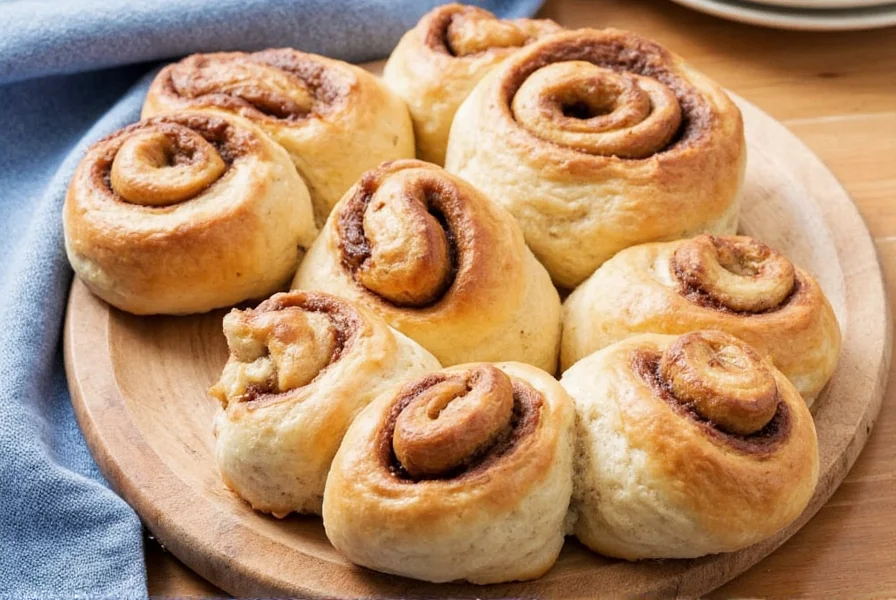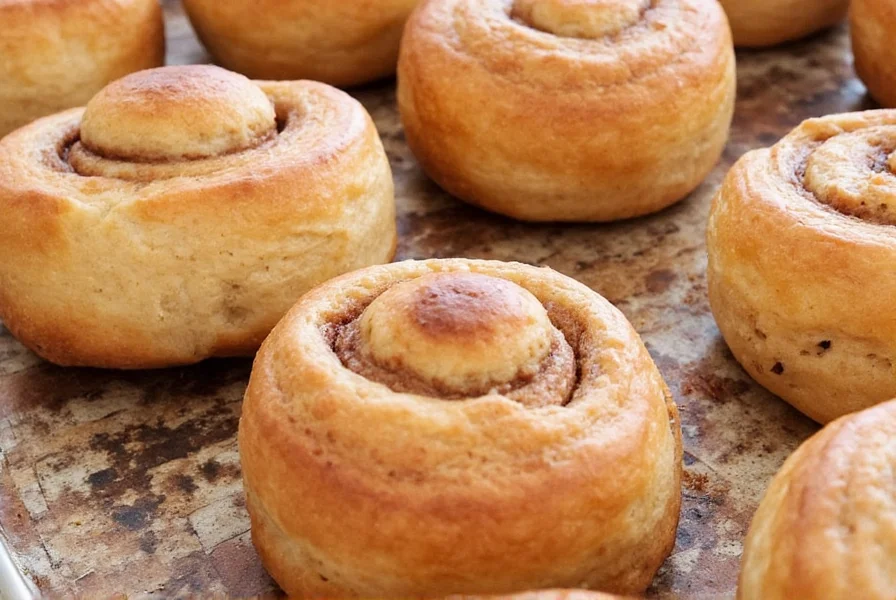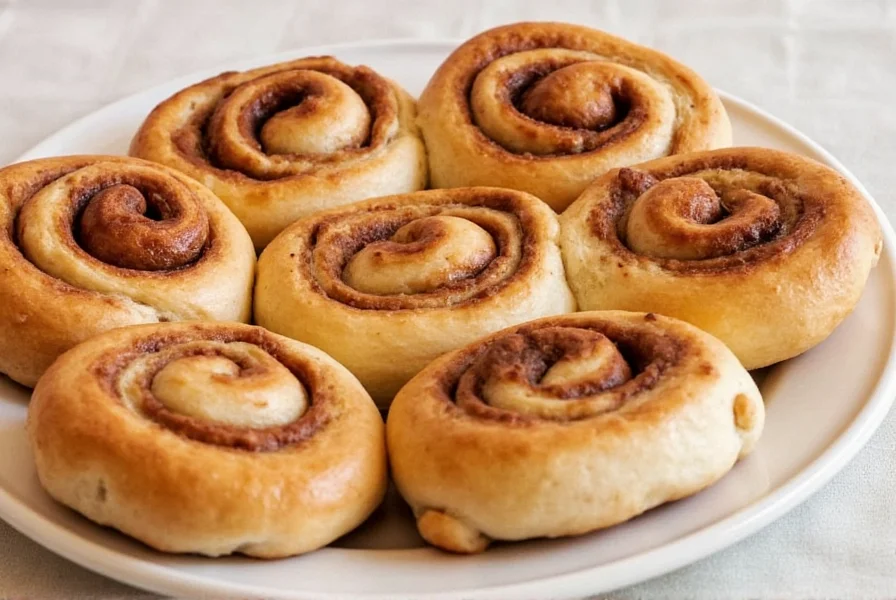For centuries, kanelbullar have been a staple of Swedish baking culture, representing more than just a sweet treat but an essential element of daily life. Understanding what makes these pastries uniquely Swedish requires examining their distinctive ingredients, preparation methods, and cultural significance.
The Cultural Significance of Kanelbullar
In Sweden, kanelbullar aren't merely pastries—they're cultural icons. Designated as Sweden's official national pastry in 1999, these buns play a central role in fika, the cherished Swedish tradition of taking a coffee break with friends, colleagues, or family. Unlike hurried coffee breaks elsewhere, fika is a dedicated pause in the day where productivity stops and social connection takes priority.
Every October 4th, Sweden celebrates Kanelbullens dag (Cinnamon Bun Day), a relatively recent tradition established in 1999 by the Swedish Home Baking Council. On this day, bakeries across Sweden offer special varieties, and households nationwide bake their own versions of these beloved buns.
What Makes Swedish Cinnamon Buns Different
While cinnamon rolls exist in many cultures, authentic Swedish kanelbullar have several distinctive characteristics that set them apart from their American and other international counterparts:
| Feature | Swedish Kanelbullar | American Cinnamon Rolls |
|---|---|---|
| Size | Small (3 inches), individual portions | Larger, often shared |
| Dough Flavor | Contains cardamom | Typically no cardamom |
| Filling Sweetness | Subtly sweet | Very sweet |
| Topping | Pearl sugar | Icing or glaze |
| Shape | Rolled into balls | Coiled spirals |
Traditional Ingredients and Their Importance
The magic of authentic Swedish cinnamon buns lies in their carefully balanced ingredients. Unlike many American recipes that rely heavily on sugar, traditional kanelbullar achieve their distinctive flavor profile through specific components:
- Cardamom in the dough - This is non-negotiable in authentic recipes. The warm, citrusy notes of cardamom complement the cinnamon without overpowering it.
- Pearl sugar topping - Not just decorative, this coarse sugar provides a delightful crunch that contrasts with the soft bun.
- Butter-based filling - Traditional recipes use softened butter rather than melted, creating distinct layers rather than a homogeneous swirl.
- Fresh yeast - While instant yeast works, traditional Swedish bakers prefer fresh yeast for its distinctive flavor.
The balance of sweetness is crucial—Swedish palates generally prefer less sweet baked goods than Americans, making authentic kanelbullar noticeably less sugary than their American counterparts.

Classic Swedish Cinnamon Bun Recipe
Creating authentic kanelbullar requires attention to detail and respect for traditional techniques. Here's a time-honored approach to making these beloved pastries:
Ingredients
- 500g all-purpose flour
- 100ml milk (lukewarm)
- 75g unsalted butter
- 25g fresh yeast (or 7g dry yeast)
- 60g granulated sugar
- 1 teaspoon salt
- 1 teaspoon ground cardamom
- 50g softened butter (for filling)
- 50g sugar
- 1.5 tablespoons ground cinnamon
- Pearl sugar for topping
Step-by-Step Instructions
- Prepare the dough: Heat milk until lukewarm, then dissolve yeast in it. In a large bowl, combine flour, sugar, salt, and cardamom. Add the yeast mixture and softened butter, then knead until smooth (about 10 minutes by hand or 5 minutes with a stand mixer).
- First rise: Place dough in a greased bowl, cover with plastic wrap, and let rise in a warm place until doubled (about 1 hour).
- Prepare filling: Mix sugar and cinnamon. Roll out the risen dough into a rectangle approximately 1/4 inch thick.
- Assemble: Spread softened butter evenly over the dough, then sprinkle with cinnamon-sugar mixture. Roll the dough tightly from the long side, then cut into 12 equal pieces.
- Shape: Curl the ends of each piece toward the center to form a spiral bun. Place on a parchment-lined baking sheet.
- Second rise: Cover and let rise for 30-40 minutes until puffy.
- Bake: Preheat oven to 425°F (220°C). Bake for 8-10 minutes until golden. Immediately sprinkle with pearl sugar while still warm.
Perfecting Your Swedish Cinnamon Buns
Even experienced bakers can encounter challenges when making authentic kanelbullar. Here are professional tips for achieving bakery-quality results:
- Dough temperature matters: Keep ingredients at room temperature for optimal yeast activity. The ideal dough temperature after mixing is 75-78°F (24-26°C).
- Don't overfill: Too much filling causes leakage during baking. The traditional Swedish ratio is more restrained than American versions.
- Baking precision: Swedish buns bake quickly at high temperature—overbaking dries them out. They should be golden but still soft.
- Freshness is key: Kanelbullar are best enjoyed the day they're made. Unlike American rolls with heavy icing, they don't keep well due to their delicate texture.
Serving Traditions and Pairings
In Sweden, how you serve kanelbullar is as important as how you make them. Authentic presentation follows specific traditions:
- The fika ritual: Serve warm kanelbullar with strong coffee—never espresso. The coffee should be brewed to Swedish standards (medium roast, medium strength).
- Accompaniments: Traditional pairings include cloudberry jam (hyllobär) or whipped cream, though purists enjoy them plain.
- Serving temperature: Always serve slightly warm—never hot (which masks flavors) or cold (which hardens the texture).
- Plate presentation: On a simple white plate, often accompanied by a small glass of milk for children.

Variations Across Sweden
While the classic kanelbulle remains consistent nationwide, regional variations add diversity to this beloved pastry:
- Stockholm style: Slightly larger with a more pronounced cardamom flavor
- Gothenburg variation: Often includes a hint of orange zest in the dough
- Malmö interpretation: Sometimes features a touch of almond in the filling
- Christmas specialty: Julbullar may include saffron or additional spices
These regional differences reflect Sweden's diverse culinary landscape while maintaining the essential character of the kanelbulle.
Common Mistakes to Avoid
When attempting authentic Swedish cinnamon buns, certain pitfalls can compromise authenticity:
- Over-sweetening: Traditional recipes use less sugar than American versions—resist the urge to increase sweetness.
- Omitting cardamom: This defines Swedish baking—without it, you're making generic cinnamon buns, not kanelbullar.
- Using icing: Authentic Swedish buns never have glaze—pearl sugar is the only acceptable topping.
- Incorrect shaping: Swedish buns are formed into balls, not coiled spirals like American rolls.
- Overbaking: They should be soft and slightly underdone in the center—they continue cooking on the tray after removal from oven.
Frequently Asked Questions
What's the difference between Swedish cinnamon buns and American cinnamon rolls?
Swedish cinnamon buns (kanelbullar) are smaller, contain cardamom in the dough, have a less sweet filling, are topped with pearl sugar rather than icing, and are shaped into balls rather than coiled spirals. They're traditionally less sweet than American versions and are an integral part of Sweden's fika coffee break culture.
Why is cardamom essential in authentic Swedish cinnamon buns?
Cardamom is a defining ingredient in Swedish baking tradition. It provides a warm, citrusy note that complements the cinnamon without overpowering it. Omitting cardamom results in a generic cinnamon bun rather than authentic kanelbullar, which have been part of Swedish culinary culture since the 1600s when cardamom was introduced to Scandinavia.
Can I make Swedish cinnamon buns without pearl sugar?
While pearl sugar is traditional, you can substitute coarse sugar or even crushed sugar cubes. The key is using a sugar that maintains its texture during baking to provide the characteristic crunch. Regular granulated sugar will melt completely, which isn't authentic to Swedish kanelbullar.
How should Swedish cinnamon buns be stored for best freshness?
Authentic Swedish cinnamon buns are best enjoyed the day they're made. Unlike American cinnamon rolls with heavy icing, kanelbullar don't keep well due to their delicate texture. If necessary, store in an airtight container at room temperature for up to 24 hours, but they're traditionally made fresh for each fika break.
What is the proper way to serve Swedish cinnamon buns?
In Sweden, kanelbullar are served slightly warm (never hot or cold) with strong coffee as part of the fika tradition. They're typically presented on a simple white plate, sometimes accompanied by cloudberry jam or whipped cream, but often enjoyed plain to appreciate their subtle flavors.











 浙公网安备
33010002000092号
浙公网安备
33010002000092号 浙B2-20120091-4
浙B2-20120091-4